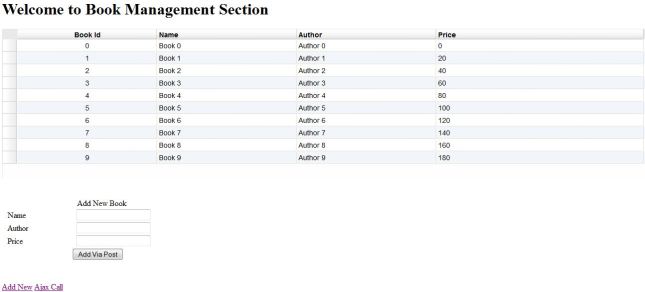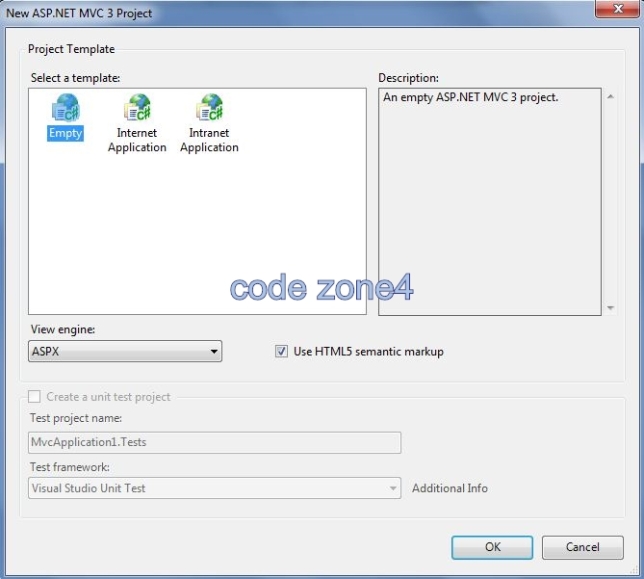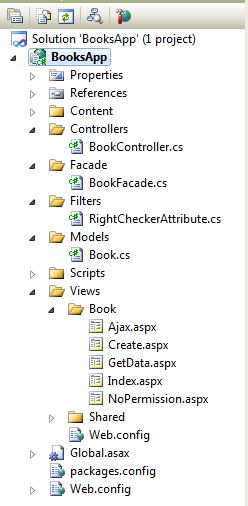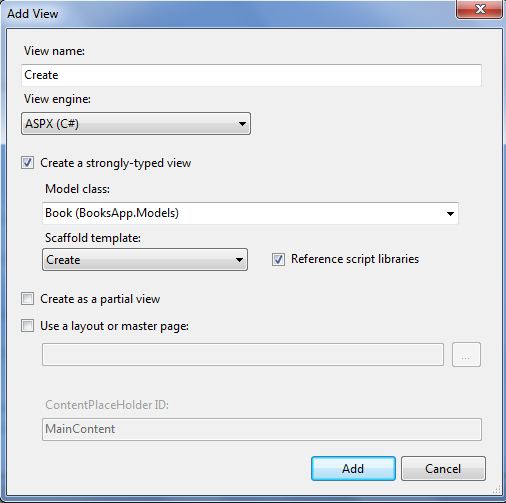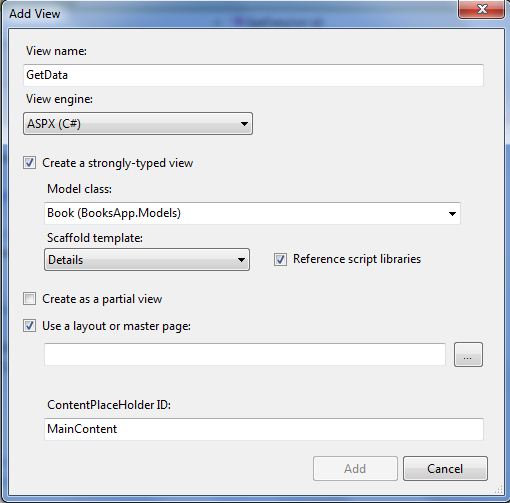<!DOCTYPE html>
<html>
<head>
<meta charset="<a>utf-8</a>">
<title>Street View service</title>
<link href="<a href="view-source:https://google-developers.appspot.com/maps/documentation/javascript/examples/default.css">/maps/documentation/javascript/examples/default.css</a>" rel="<a>stylesheet</a>">
<script src="<a href="view-source:https://maps.googleapis.com/maps/api/js?v=3.exp&sensor=false">https://maps.googleapis.com/maps/api/js?v=3.exp&sensor=false</a>"></script>
<script>
function initialize() {
var fenway = new google.maps.LatLng(42.345573,-71.098326);
var mapOptions = {
center: fenway,
zoom: 14,
mapTypeId: google.maps.MapTypeId.ROADMAP
};
var map = new google.maps.Map(
document.getElementById('map-canvas'), mapOptions);
var panoramaOptions = {
position: fenway,
pov: {
heading: 34,
pitch: 10
}
};
var panorama = new google.maps.StreetViewPanorama(document.getElementById('pano'),panoramaOptions);
map.setStreetView(panorama);
}
google.maps.event.addDomListener(window, 'load', initialize);
</script>
</head>
<body>
<div id="<a>map-canvas</a>" style="<a>width: 400px; height: 300px</a>"></div>
<div id="<a>pano</a>" style="<a>position:absolute; left:410px; top: 8px; width: 400px; height: 300px;</a>"></div>
</body>
</html>
Monthly Archives: April 2013
Google Map Street View
Building ASP.NET MVC3 Applications
Welcome Back, today we gonna build a simple MVC application using ASP.net MVC3 template. The tutorial does not intend to teach you ASP.net MVC3 framework. There are so many resources on the internet that might help you getting started with this technology. So we focus on building a simple application using models, views, controllers, filters and other ASP.net specific things. Remember MVC is a design pattern and it can also be implemented in other programing languages like PHP.
1. Creating New Project
2. Folder Structure
3. Changing the default controller.
You can change the default controller in Global.asax file by specifying the controller name and action method.
4. Adding Dojo files
We are using Dojo data grid for displaying data records. Therefore please download Dojo latest version and include them in Scripts folder.
5. Creating Book Modal
Right click on Models -> Add -> Class
Book.cs
using System;
using System.Collections.Generic;
using System.Linq;
using System.Web;
using System.ComponentModel.DataAnnotations;
namespace BooksApp.Models
{
public class Book
{
public int Id { get; set; }
[Required]
public string Name { get; set; }
[Required]
public string Author { get; set; }
[Required]
public float Price { get; set; }
}
}
6. Creating BookFacade class
For a real application database operations can be placed in this class. For the sake of simplicity we omit mapping entity to database.
Right click on Models -> Add -> Class
BookFacade.cs
using System;
using System.Collections.Generic;
using System.Linq;
using System.Web;
using BooksApp.Models;
namespace BooksApp.Facade
{
public class BookFacade
{
public static List<Book> bookList { get; set; }
public static List<Book> GetBookList()
{
if (bookList == null)
{
bookList = new List<Book>();
for (int i = 0; i < 10; i++)
{
bookList.Add(new Book {Id = i, Name = "Book " + i, Author = "Author " + i, Price = i * 20 });
}
}
return bookList;
}
public static Book FindBook(int id)
{
var bookList = GetBookList();
return bookList.Find(x => x.Id == id);
}
public static void Add(Book book)
{
var bookList = GetBookList();
book.Id = bookList.Max(x => x.Id) + 1;
bookList.Add(book);
}
public static void Delete(int id)
{
var bookList = GetBookList();
Book book = bookList.Find(x => x.Id == id);
bookList.Remove(book);
}
}
}
7. Creating BookController
Right click on Controllers-> Add -> Controller
BookController
using System;
using System.Collections.Generic;
using System.Linq;
using System.Web;
using System.Web.Mvc;
using BooksApp.Models;
using BooksApp.Facade;
using BooksApp.Filters;
namespace BooksApp.Controllers
{
public class BookController : Controller
{
//
// GET: /Book/
public ActionResult Index()
{
return View();
}
public ActionResult Create()
{
return View();
}
[AcceptVerbs(HttpVerbs.Post)]
public ActionResult Create(Book book)
{
if (book.Name.Length < 5)
{
ModelState.AddModelError("Book name", "Book name should have five or more characters.");
}
if (!ModelState.IsValid)
{
return View("Create",book);
}
BookFacade.Add(book);
return RedirectToAction("Index");
}
public ActionResult GetData(int id)
{
Book book = BookFacade.FindBook(id);
return View(book);
}
[RightChecker(AllowedBookIds = "5,6,7")]
public ActionResult Delete(int id)
{
Book book = BookFacade.FindBook(id);
if (book != null)
{
BookFacade.Delete(id);
}
return RedirectToAction("Index");
}
/////////////////////////AJAX/////////////////////////////
public ActionResult GetJSON()
{
return Json(BookFacade.GetBookList(), JsonRequestBehavior.AllowGet);
}
public ActionResult Ajax()
{
return View();
}
[AcceptVerbs(HttpVerbs.Post)]
public ActionResult Create_AJAX(Book book)
{
BookFacade.Add(book);
return new EmptyResult();
}
}
}
Adding views
8. Adding Create View
<%@ Page Language="C#" Inherits="System.Web.Mvc.ViewPage<BooksApp.Models.Book>" %>
<!DOCTYPE html>
<html>
<head runat="server">
<title>Create</title>
</head>
<body>
<script src="<%: Url.Content("~/Scripts/jquery-1.5.1.min.js") %>" type="text/javascript"></script>
<script src="<%: Url.Content("~/Scripts/jquery.validate.min.js") %>" type="text/javascript"></script>
<script src="<%: Url.Content("~/Scripts/jquery.validate.unobtrusive.min.js") %>" type="text/javascript"></script>
<% using (Html.BeginForm("Create","Book")) { %>
<%: Html.ValidationSummary(true) %>
<fieldset>
<legend>Book</legend>
<div>
<%: Html.LabelFor(model => model.Name) %>
</div>
<div>
<%: Html.EditorFor(model => model.Name) %>
<%: Html.ValidationMessageFor(model => model.Name) %>
</div>
<div>
<%: Html.LabelFor(model => model.Author) %>
</div>
<div>
<%: Html.EditorFor(model => model.Author) %>
<%: Html.ValidationMessageFor(model => model.Author) %>
</div>
<div>
<%: Html.LabelFor(model => model.Price) %>
</div>
<div>
<%: Html.EditorFor(model => model.Price)%>
<%: Html.ValidationMessageFor(model => model.Price)%>
</div>
<p>
<input type="submit" value="Create" />
</p>
</fieldset>
<% } %>
<div>
<%: Html.ActionLink("Back to List", "Index") %>
</div>
</body>
</html>
9. Adding GetData View
<%@ Page Language="C#" Inherits="System.Web.Mvc.ViewPage<BooksApp.Models.Book>" %>
<!DOCTYPE html>
<html>
<head runat="server">
<title>Book Details</title>
</head>
<body>
<fieldset>
<legend>Book</legend>
<div>Name</div>
<div>
<%: Html.DisplayFor(model => model.Name) %>
</div>
<div>Author</div>
<div>
<%: Html.DisplayFor(model => model.Author) %>
</div>
<div>Price</div>
<div>
<%: Html.DisplayFor(model => model.Price) %>
</div>
</fieldset>
<p>
<%: Html.ActionLink("Edit", "Edit", new { id=Model.Id }) %> |
<%: Html.ActionLink("Back to List", "Index") %>
</p>
</body>
</html>
10. Adding Index View
<%@ Page Language="C#" Inherits="System.Web.Mvc.ViewPage<dynamic>" %>
<!DOCTYPE html>
<html>
<head runat="server">
<title>Index</title>
<style type="text/css">
@import "../../Scripts/dojo/dijit/themes/dijit.css";
@import "../../Scripts/dojo/dojox/grid/resources/Grid.css";
@import "../../Scripts/dojo/dojox/grid/resources/tundraGrid.css";
@import "../../Scripts/dojo/dijit/themes/tundra/tundra.css";
</style>
<script type="text/javascript" src="../../Scripts/dojo/dojo/dojo.js"
djconfig="isDebug:false, debugAtAllCosts:false"></script>
<script src="../../Scripts/dojo/dijit/dijit.js" type="text/javascript"></script>
<script language="javascript" type="text/javascript">
dojo.require("dojox.grid.DataGrid");
dojo.require("dojo.data.ItemFileWriteStore");
dojo.ready(function () {
DisplayAll();
});
function DisplayAll() {
var that = this;
// The parameters to pass to xhrGet, the url, how to handle it, and the callbacks.
var xhrArgs = {
url: "../Book/GetJSON",
handleAs: "json",
preventCache: true,
load: function (data, ioargs) {
that.PopulateGrid(data); //This will populate the grid
},
error: function (error, ioargs) {
alert(ioargs.xhr.status);
}
}
// Call the asynchronous xhrGet
dojo.xhrGet(xhrArgs);
}
function PopulateGrid(store) {
var jsonString = "{identifier: \"Id\", items: " + dojo.toJson(store) + "}"; //Creates the Json data that supports the grid structure. The identifier value should be unique or errors will be thrown
var dataStore = new dojo.data.ItemFileReadStore({ data: dojo.fromJson(jsonString) }); //Converts it back to an object and set it as the store
/*set up layout of the grid that will be columns*/
var gridStructure = [
{ field: 'Id', name: 'Book Id', styles: 'text-align: center;', width: 20 },
{ field: 'Name', name: 'Name', width: 20 },
{ field: 'Author', name: 'Author', width: 20 },
{ field: 'Price', name: 'Price', width: 30} //"field" matches to the JSON objects field
];
/*create a new grid:*/
var bookGrid = dijit.byId('gridS');
if (bookGrid == null) { //Only create a grid if there grid already created
var grid = new dojox.grid.DataGrid({
id: 'gridS',
store: dataStore,
structure: gridStructure,
rowSelector: '30px',
height: '300px'
},
"gridDivTag"); //The div tag that is used to place the grid
/*Call startup() to render the grid*/
grid.startup();
}
else {
bookGrid._refresh();
bookGrid.setStore(dataStore); //Setting the new datastore after entering new data
}
}
</script>
</head>
<body>
<div>
<h1>Welcome to Book Management Section</h1>
<% //HtmlAnchor %>
<div id="gridDivTag"></div>
<br /><br />
<%: Html.ActionLink("Add New", "Create") %>
<%: Html.ActionLink("Ajax Call", "Ajax") %>
</div>
</body>
</html>
11. Adding AJAX View
I wanna create this view just to demonstrate AJAX operations with ASP.NET MVC3
<%@ Page Language="C#" Inherits="System.Web.Mvc.ViewPage<dynamic>" %>
<!DOCTYPE html>
<html>
<head id="Head1" runat="server">
<title>Ajax</title>
<style type="text/css">
@import "../../Scripts/dojo/dijit/themes/dijit.css";
@import "../../Scripts/dojo/dojox/grid/resources/Grid.css";
@import "../../Scripts/dojo/dojox/grid/resources/tundraGrid.css";
@import "../../Scripts/dojo/dijit/themes/tundra/tundra.css";
.style1
{
width: 134px;
}
</style>
<script type="text/javascript" src="../../Scripts/dojo/dojo/dojo.js" djconfig="isDebug:false, debugAtAllCosts:false"></script>
<script src="../../Scripts/dojo/dijit/dijit.js" type="text/javascript"></script>
<script language="javascript" type="text/javascript">
dojo.require("dojox.grid.DataGrid");
dojo.require("dojo.data.ItemFileWriteStore");
dojo.ready(function () {
DisplayAll();
});
function book() {
this.Name = dojo.byId("name").value;
this.Author = dojo.byId("author").value;
this.Price = dojo.byId("price").value;
}
function addBook_post() {
var bookObj = new book();
var xhrArgs = {
url: "../Book/Create_AJAX",
headers: { //Adding the request headers
"Content-Type": "application/json; charset=utf-8" // This is important to model bind to the server
},
postData: dojo.toJson(bookObj, true), //Converting the object in to Json to be sent the action method
handleAs: "json",
load: function (data) {
DisplayAll();
},
error: function (error) {
alert('error');
}
}
dojo.xhrPost(xhrArgs);
}
function DisplayAll() {
var that = this;
// The parameters to pass to xhrGet, the url, how to handle it, and the callbacks.
var xhrArgs = {
url: "../Book/GetJSON",
handleAs: "json",
preventCache: true,
load: function (data, ioargs) {
that.PopulateGrid(data); //This will populate the grid
},
error: function (error, ioargs) {
alert(ioargs.xhr.status);
}
}
// Call the asynchronous xhrGet
dojo.xhrGet(xhrArgs);
}
function PopulateGrid(store) {
var jsonString = "{identifier: \"Id\", items: " + dojo.toJson(store) + "}"; //Creates the Json data that supports the grid structure. The identifier value should be unique or errors will be thrown
var dataStore = new dojo.data.ItemFileReadStore({ data: dojo.fromJson(jsonString) }); //Converts it back to an object and set it as the store
/*set up layout of the grid that will be columns*/
var gridStructure = [
{ field: 'Id', name: 'Book Id', styles: 'text-align: center;', width: 20 },
{ field: 'Name', name: 'Name', width: 20 },
{ field: 'Author', name: 'Author', width: 20 },
{ field: 'Price', name: 'Price', width: 30} //"field" matches to the JSON objects field
];
/*create a new grid:*/
var bookGrid = dijit.byId('gridS');
if (bookGrid == null) { //Only create a grid if there grid already created
var grid = new dojox.grid.DataGrid({
id: 'gridS',
store: dataStore,
structure: gridStructure,
rowSelector: '30px',
height: '300px'
},
"gridDivTag"); //The div tag that is used to place the grid
/*Call startup() to render the grid*/
grid.startup();
}
else {
bookGrid._refresh();
bookGrid.setStore(dataStore); //Setting the new datastore after entering new data
}
}
</script>
</head>
<body >
<form id="form1" runat="server">
<div>
<h1>Welcome to Book Management Section</h1>
<div id="gridDivTag"></div>
<br /><br />
<table style="width: 400px;">
<caption>
Add New Book</caption>
<tr>
<td>
Name</td>
<td>
<input id="name" type="text" />
</td>
</tr>
<tr>
<td>
Author</td>
<td>
<input id="author" type="text" />
</td>
</tr>
<tr>
<td>
Price</td>
<td>
<input id="price" type="text" />
</td>
</tr>
<tr>
<td>
</td>
<td>
<input id="add_post" type="submit" value="Add Via Post" onclick="addBook_post()" />
</td>
</tr>
</table>
<br /><br />
<%: Html.ActionLink("Add New", "Create") %> <%: Html.ActionLink("Ajax Call", "Ajax") %>
</div>
</form>
</body>
</html>
Sample testing links
http://localhost:3616/
http://localhost:3616/Book/Create
http://localhost:3616/Book/Ajax
http://localhost:3616/Book/GetData/1
http://localhost:3616/Book/GetJSON
Obviously port number may change according to your environment.
Linux Client Server Socket Program
Today let’s see how to create an effective socket program with client and server communication capability. This program is based on TCP protocol. First, server program should be launched. You can specify a port in server for listening client requests. When the server get a client request, server needs to create a separate process for that client. When running client program, client should know IP address and the server port.
Server.c
#include <stdio.h>
#include <sys/types.h>
#include <sys/socket.h>
#include <linux/in.h>
#include <stdlib.h>
#include <unistd.h>
#include <errno.h>
#include <string.h>
#include <stdbool.h>
#include <math.h>
float stof(const char* s);
float calculator(char *calculation);
extern int errno;
int main(int argc,char **argv)
{
int clientaddrlen, listenfd, connectfd, bytes_rcvd, listen_queue_size=1;
short int port_no;
char readBuff[1000];
struct sockaddr_in servaddr, clientaddr;
pid_t childpid;
int status;
char sendBuff[1025];
if(argc!=3){
printf("Usage Format: ./server -p <PortNumber>\n");
printf("Sample Run: ./server -p 2000\n");
exit(1);
}
port_no = atoi(argv[argc-1]);
printf("Server running at port #%d\n", port_no);
// Create server socket.
if ( (listenfd = socket(AF_INET, SOCK_STREAM, 0)) < 0){
fprintf(stderr, "Cannot create server socket! errno %i: %s\n",errno,strerror(errno));
exit(1);
}
printf("Server socket created\n");
// Bind (attach) this process to the server socket.
servaddr.sin_family = AF_INET;
servaddr.sin_addr.s_addr = htonl(INADDR_ANY);
servaddr.sin_port = htons(port_no);
errno = bind(listenfd, (struct sockaddr *) &servaddr, sizeof(servaddr));
if(errno < 0){
printf("Server bind failure errno %i: %s\n",errno,strerror(errno));
exit(1);
}
printf("Server socket is bound to port #%d\n", port_no);
// Turn 'listenfd' to a listening socket. Listen queue size is 1.
errno=listen(listenfd,listen_queue_size);
if(errno < 0){
printf("Server listen failure errno %i: %s\n",errno,strerror(errno));
exit(1);
}
printf("Server listening with a queue of size %d. \n", listen_queue_size);
// Wait for connection(s) from client(s).
while (1){
clientaddrlen = sizeof(clientaddr);
connectfd = accept(listenfd, (struct sockaddr *) &clientaddr, &clientaddrlen);
if(connectfd<0){
printf("Server accept failure errno %d: %s\n",errno,strerror(errno));
exit(1);
}
printf("A connection received from a client. Creating a child to serve the client.\n");
if((childpid = fork()) == 0) { /* child process */
close(listenfd); /* close listening socket */
printf("Child process serving the client.\n");
if (recv(connectfd, readBuff, sizeof(readBuff), 0 ) > 0){
printf("Received message: %s\n", readBuff);
float answer = calculator(readBuff);
char msg[60];
char chAns[30]="";
sprintf(chAns,"%f",answer);
strcat(msg,chAns);
write(connectfd,msg, strlen(readBuff));
}
//close(connectfd); /* parent closes connected socket */
exit(1);
}
else if (childpid <0){ /* failed to fork */
printf("Failed to fork\n");
printf("Fork error errno %d: %s\n",errno,strerror(errno));
}
else if(childpid != 0){ /* parent process */
close(connectfd); /* parent closes connected socket */
childpid = wait(&status);
}
}
return 0;
}
float calculator(char calculation[256])
{
char *token;
char *val1;
char *val2;
float v1;
float v2;
float ans=-9999.0f;
bool validCal = true;
printf("****\n");
char tempCalculation[256];
strcpy(tempCalculation,calculation);
printf("****\n");
token = strtok(tempCalculation,"+-*//^");
int c = 0;
while(token != NULL)
{
c++;
printf("%d\n",c);
if(c == 1)
val1 = token;
if(c == 2)
val2 = token;
printf("%s\n",token);
token = strtok(NULL,"+-*//^");
}
if(c == 2)
{
int i1;
const int lenVal1 = strlen(val1);
for(i1=0; i1<lenVal1 ; i1++)
{
if(!isdigit(val1[i1]))
break;
}
if(i1 != lenVal1)
validCal = false;
int i2;
const int lenVal2 = strlen(val2)-1;
for(i2=0; i2<lenVal2 ; i2++)
{
if(!isdigit(val2[i2]))
break;
}
if(i2 != lenVal2)
validCal = false;
printf("operand1:%soperand2:%s\nlen1:%dlen2%d\n",val1,val2,lenVal1,lenVal2);
if(validCal)
{
char operator = calculation[lenVal1];
printf("Operator%c\n",operator);
printf("Calculation:%s\n",calculation);
v1 = stof(val1);
v2 = stof(val2);
printf("v1=%f\n",v1);
printf("v2=%f\n",v2);
float fv1 = stof(val1);
printf("fv1=%f\n",fv1);
//float f1 = 56.4f;
//float f2 = 2.4f;
if(operator == '+')
{
printf("Addition\n");
ans = v1 + v2;
}
else if(operator == '-')
{
printf("Substraction\n");
ans = v1 - v2;
}
else if(operator == '*')
{
printf("Multiplication\n");
ans = v1 * v2;
}
else if(operator == '/')
{
printf("Devision\n");
ans = v1 / v2;
}
else if(operator == '^')
{
printf("Power\n");
}
else
{
}
printf("Answer:%f\n",ans);
}
else
{
printf("The values are not numeric!\n");
}
return ans;
}
else
{
printf("Two operands are required for calculation\n");
validCal = false;
return ans;
}
};
float stof(const char* s){
float rez = 0, fact = 1;
if (*s == '-'){
s++;
fact = -1;
};
int point_seen;
for (point_seen = 0; *s; s++){
if (*s == '.'){
point_seen = 1;
continue;
};
int d = *s - '0';
if (d >= 0 && d <= 9){
if (point_seen) fact /= 10.0f;
rez = rez * 10.0f + (float)d;
};
};
return rez * fact;
};
Client.c
#include <stdio.h>
#include <sys/types.h>
#include <sys/socket.h>
#include <linux/in.h>
#include <stdlib.h>
#include <unistd.h>
#include <errno.h>
#include <string.h>
int main(int argc,char **argv)
{
int clientfd;
short int port_no;
char msg[1000];
char buff[1000];
struct sockaddr_in servaddr;
char *server_ip_address;
if(argc!=5){
printf("Usage Format: ./client -a <IPAddress> -p <PortNumber>\n");
printf("Sample Run: ./client -a 127.0.0.1 -p 2000\n");
exit(1);
}
server_ip_address=(char *)argv[2];
port_no = atoi(argv[4]);
printf("Client will connect to the server at IP %s, port #%d\n", server_ip_address, port_no);
// Create client socket.
if((clientfd = socket(AF_INET, SOCK_STREAM, 0))<0){
printf("Socket could not be created\n");
printf("errno %i: %s\n",errno,strerror(errno));
exit(1);
}
printf("Client socket created\n");
errno=0;
// Connect to the server client
servaddr.sin_family = AF_INET;
servaddr.sin_port = htons(port_no);
if((inet_pton(AF_INET, server_ip_address, &servaddr.sin_addr))<=0){
printf("inet_pton error for %s\n",server_ip_address);
printf("errno %d: %s\n",errno,strerror(errno));
exit(1);
}
errno=0;
if((connect(clientfd, (struct sockaddr *) &servaddr, sizeof(servaddr)))<0){
printf("Connect error\n");
printf("errno %d: %s\n",errno,strerror(errno));
exit(1);
}
printf("Client socket connected\n");
// Read one line of message from the input and send it to the server.
while(1)
{
printf("\nEnter the message to be sent to the server: ");
scanf("%s", msg);
send(clientfd, msg, strlen(msg)+1, 0);
//close(clientfd);
if (recv(clientfd, buff, sizeof(buff), 0 ) > 0){
printf("Server Response: %s\n", buff);
}
}
return 0;
}
Run server :
gcc -oa server.c
./a -p 2000
Run client:
gcc -ob client.c
./b -a 127.0.0.1 -p 2000


